One Week In Italy: A Perfect Itinerary for First Timers
One of the things that we, as Americans, often forget when we think about Italy is the fact that it is one of the youngest countries in Europe. When we learn about Italy – or more accurately, the Italian peninsula, we learn all about Ancient Rome and its splendor and glory.
What gets glossed over is modern day Italy, which was only unified in 1861, taking it from a bunch of independent regions and city states into the country we know today.
For reference, Spain’s unification happened way back in the 15th Century.
That relatively late unification (by European standards) has some interesting implications for modern day Italy.
The most interesting to us as visitors is that each region in Italy has its own slightly different way of doing things.they all had different political structures, cultural quirks, and, perhaps most importantly, food and drink specialties.
So, no matter how many trips to Italy you take (we average one per year over the past four years or so), there’s always more to explore!
Obviously, with only one week to spend, you’re going to be a little bit limited in terms of how many places you can go, but we hope that you’ll get a taste for what makes each region that you spend time in special.
We’re here to help you figure out how to spend seven days exploring that regional diversity, seeing the main sights along with some less-visited places (Bologna!) that we love.
Anyway, our point is that Italy is amazing. We love Italy, and we think you should go (and be smart about how you structure your trip).
In this guide, we’re going to give you our version of the best way to spend a week exploring Italy for the first time all based on our own experiences galavanting around Italy.
Basically, if we knew what we know now when we were planning our first trip, what would we do?
Here’s what we’re going to cover:
- Exactly how to plan out your 7 day Italy itinerary, including what stops to make, what route to take, and all the important logistics you need to know
- A guide to what to do, where to stay, and how to get there for each stop on the itinerary
- Options for shorter and longer trips if you have more or less time in Italy
Throughout the guide, we’ll share our favorite finds and experiences in Italy based on our multiple trips (including six weeks in Italy a couple of years ago, and four trips to Italy over the past five years) to help you plan your unforgettable trip.
Sound good to you? Let’s get into it.
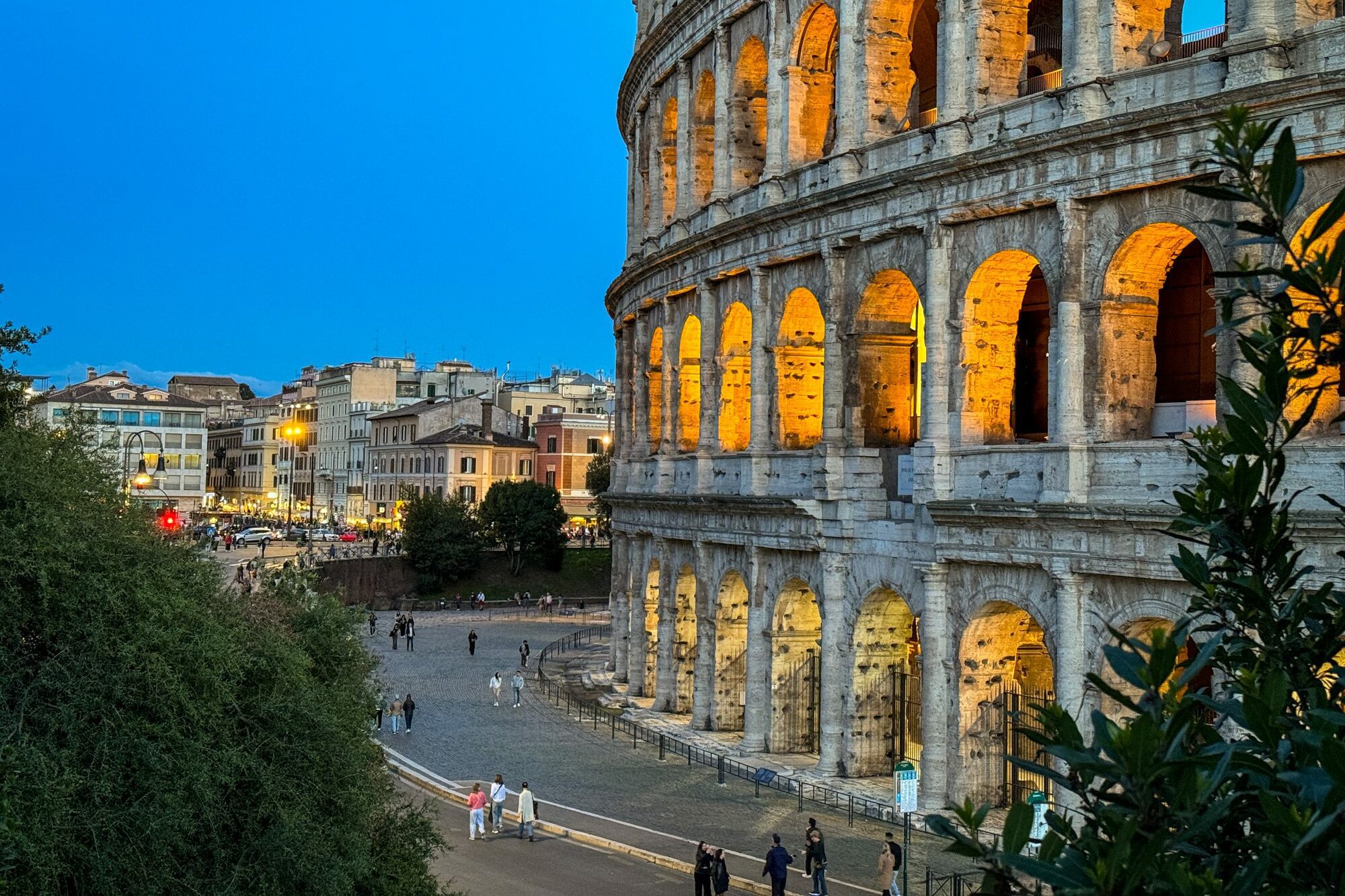
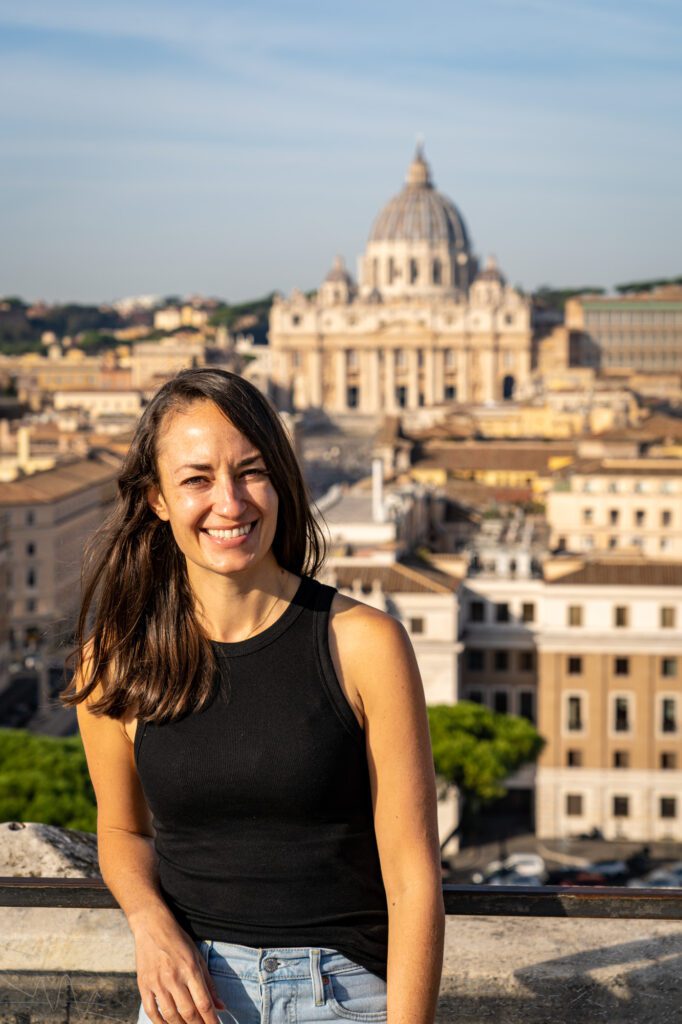
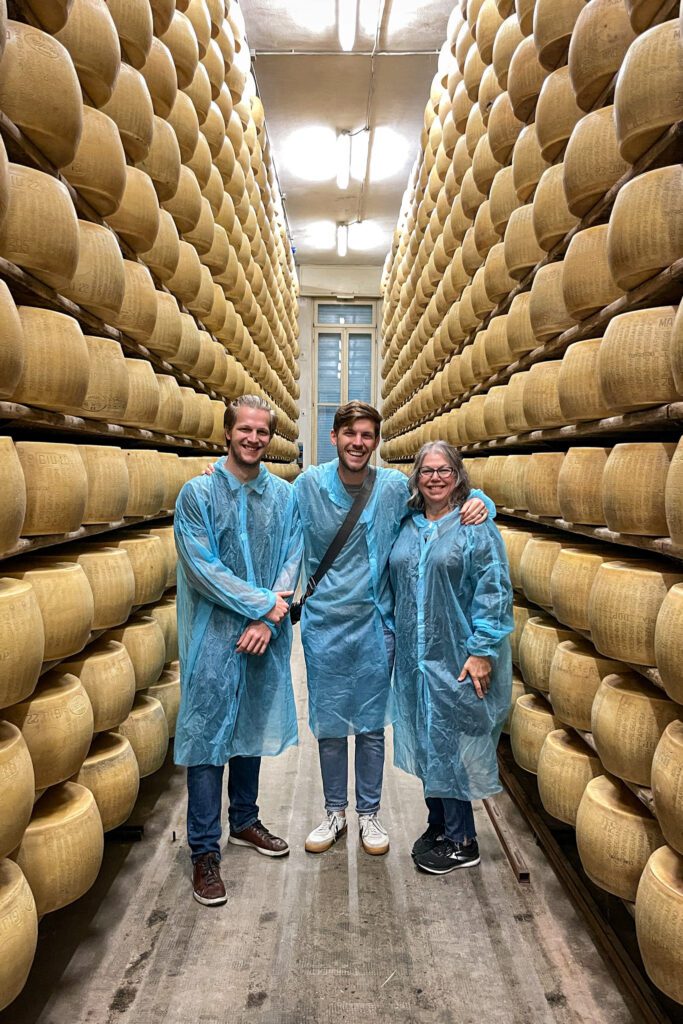
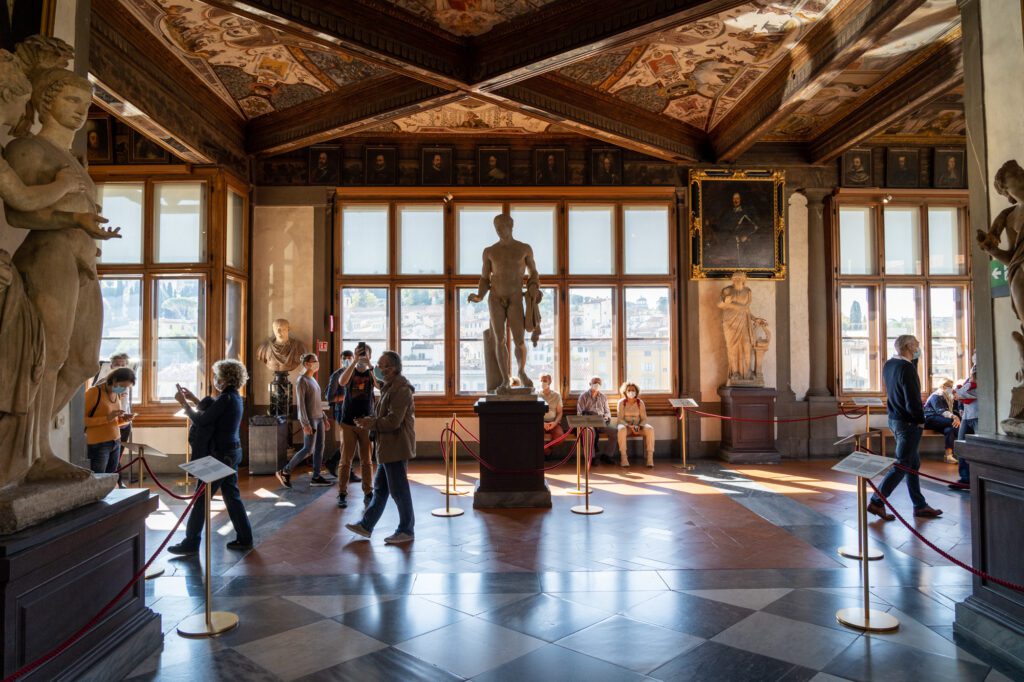
Disclaimer: Some of the links in this post, like hotel links, are affiliate links, meaning at no additional cost to you, we make a little bit of money if you click through and book. That being said, we would never recommend something to you that we don’t stand behind 100%.
What Can You See With One Week?
The first thing we should do here is set expectations for what you’re going to find in this itinerary, because it is very much NOT a “one city per day to cram it all in” situation.
Generally speaking, we highly recommend spending no less than two or three days in a city at the very least.
Mostly because packing your bag and moving every day or two is exhausting, and is not a particularly pleasant way to travel (especially with check in and check out times, which can mean you’re just losing precious time on your trip).
However, that approach is not super conducive to a short trip. If you’re flying halfway around the world (assuming you’re coming from outside of Europe), then you have to make the most of your time and see every city in Italy, right?
We’d urge you to resist the temptation to continuously add places to your itinerary until you’re scooting around Italy like a madman (or madwoman), changing cities every day and sprinting between museums.
We’ve been there. Trust us.
We completely understand the temptation, have fallen victim to it many times, and are here to tell you that your trip will be much more relaxing, rewarding, and memorable if you spend more time in fewer places.
When you get into the main itinerary below, you’ll notice that we have you spending your time split between just two Italian cities – Rome and Florence.
After a lot of thinking and reshuffling (Matt spent an entire downhill portion of a recent long hike trying to make Rome-Florence-Venice work without being too fast), we came to the conclusion that, if you truly want to be able to explore the cities you’re visiting beyond a cursory once-over, you really can’t do all three in one week.
Trying to do all three means basically either short-changing Rome (definitely don’t do that, especially considering jetlag!) or dedicating a day and a half each to Florence and Venice, which just isn’t enough time to do either city justice.
Now, If you have an extra day or two, the first thing we’d do is add one more city (probably Venice if you’ve never been, but we also really like Milan and Bologna).
We have PLENTY of ideas on how to extend your trip below the main itinerary.
P.S. We have an entire guide full of tips for visiting Italy for the first time that we’ve compiled over our time in Italy that covers itinerary planning, logistics, and cultural differences. We think you should read it to make your trip smoother and more have a more immersive experience.
Where to Start and End Your Itinerary
As we mentioned, this itinerary just focuses on Rome and Florence, using Florence in particular as a home base for exploring Tuscany and other parts of Central Italy.
If you follow the main itinerary below, the best way to organize your trip is to fly into Rome and out of Florence (or vice versa).
A round trip flight might be slightly cheaper (in some cases, it might not be), but it will eat up a full day of your trip traveling back to a place you’ve already explored.
Given the fact that we’re talking about a seven day trip, that’s not an insignificant amount of time.
Between cities, it’s going to be most convenient to take high speed trains, which have plentiful routes between Rome and Florence. We’re big on train travel in Italy, and it’s our favorite way to move around.
In Rome, you’ll want to fly into Leonardo da Vinci–Fiumicino Airport (FCO), Rome’s major international airport located about an hour (by train or taxi) outside the city center towards Italy’s western coast.
It’s Italy’s largest and busiest airport, serving numerous international carriers (though there are very few direct transatlantic flights, unfortunately).
In Florence, you have a couple of choices. The best is Amerigo Vespucci Airport (FLR), which is closest to the city center and has a nice range of international flights (but it’s a tiny airport and prices might be higher).
We think the convenience – it’s a short tram or bus ride into the city center) – makes it by far the best choice.
You also have Pisa International Airport (PSA, also called “Galileo Galilei Airport”), which is Tuscany’s main international airport.
However, it’s over an hour away (closer to an hour and a half) from Florence, which makes it a pretty inconvenient option that we wouldn’t recommend given limited time.
If you have the option, do yourself a favor and fly into FLR.
Exactly How to Spend 7 Days in Italy (for First Timers)
And now, let’s get into the itinerary.
Here’s what the itinerary you’re going to find below looks like written out.
- Day 1: Rome
- Day 2: Rome
- Day 3: Rome
- Day 4: Early Train to Florence
- Day 5: Florence
- Day 6: Florence (Day Trip)
- Day 7: Florence (Day Trip?)
Obviously, you’ll have to massage this itinerary a little bit to make it work with your specific flights. We’re assuming you have seven full days in Italy, not including the half days that would be dedicated to your arriving and departing flights.
Obviously, there is a LOT to see in Italy, and we have plenty of ideas on how to make changes to this itinerary.
For example, you could head to southern Italy to focus more on Naples and the Amalfi Coast after spending a few days in Rome, or a northern Italy trip that focuses on the Dolomites, Lake Como, and Milan. It all depends on what you’re looking for.
You’ll find some of our ideas in the “with more time” section below, which you can use to make changes to your itinerary based on your specific style and needs.
A note here on flying versus taking the train: you could fly between cities on this itinerary if you really wanted to, but there are a couple of reasons why taking the train is a better option, we think.
First, assuming you’re taking a high speed train, by the time you add up all the extra time you have to spend at the airport (and getting there – more on that in a second) – the train journey is going to take roughly the same amount of time as the flight.
Second, the train stations for these cities are generally in the city center, which means it’s a quick and easy journey from train station to hotel.
On the other hand, the airports are generally 30-45 minutes outside the city center, which eats up precious time on your trip (and relates to the first point about trains being more efficient).
Third, trains are SO MUCH more pleasant than airplanes. You get to see the landscapes as you’re traveling, you’re not locked in a metal tube in the sky, and you generally get more leg room and baggage storage on a train.
The website for booking trains directly is Trenitalia, and it’s actually fairly streamlined and user-friendly. They even have a (mostly) functional app!
The only hiccup is that you need to know the name of the train station in Italian (e.g. typing “Venice” doesn’t work – you have to type “Veneto,” which is just Venice in Italian).
If you’re not comfortable with that, we’ve used Omio often to book trains around Europe, which is generally a far more streamlined experience (in English, no less).
Days 1-3: Rome
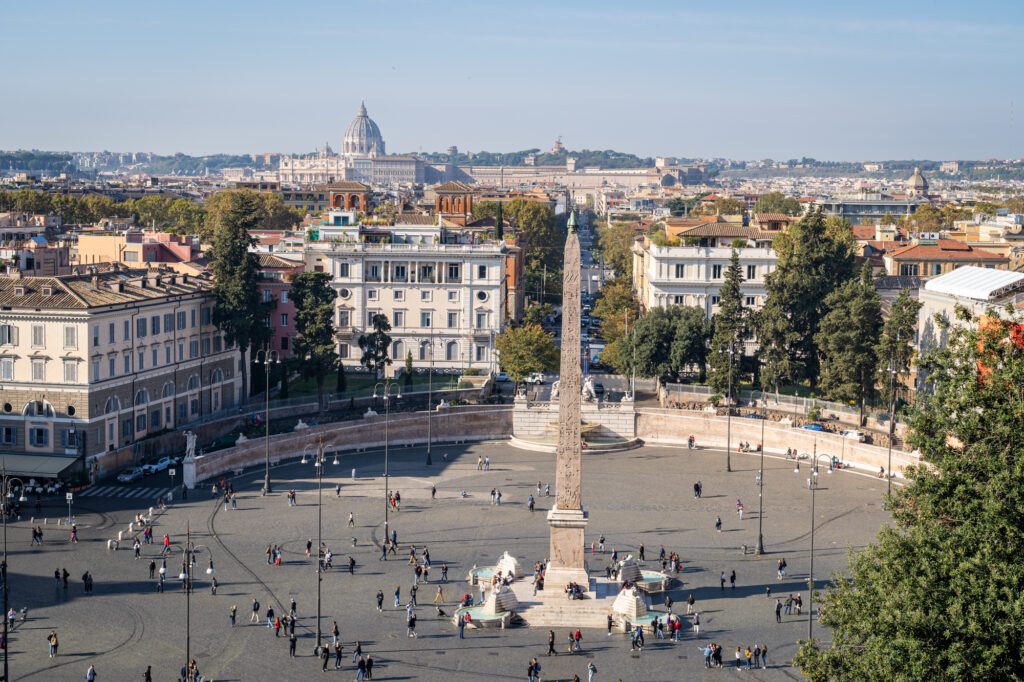
We love Rome. Alysha lived there for six months in college and met one of her best friends there, so it holds a special place in her heart.
Matt has been more than five times at this point, and is a history nerd who has listened to countless hours of podcasts and audiobooks about the Roman Empire.
There is a ton of history in Rome, and it’s a great place to learn about not only the Roman Empire, which was centered in Rome, but also the modern state of Italy, which is one of the newest countries in Europe having only been unified in the 19th century after centuries of being a collection of independent states with different laws, languages, and cultures.
Aside from Napoli, which we haven’t really spent enough time in ourselves to have a strong opinion about, Rome is the city in Italy that we hear the most mixed reviews about.
We hear things like “it’s dirty” and “it’s crowded” and think to ourselves, yeah, it’s Rome!
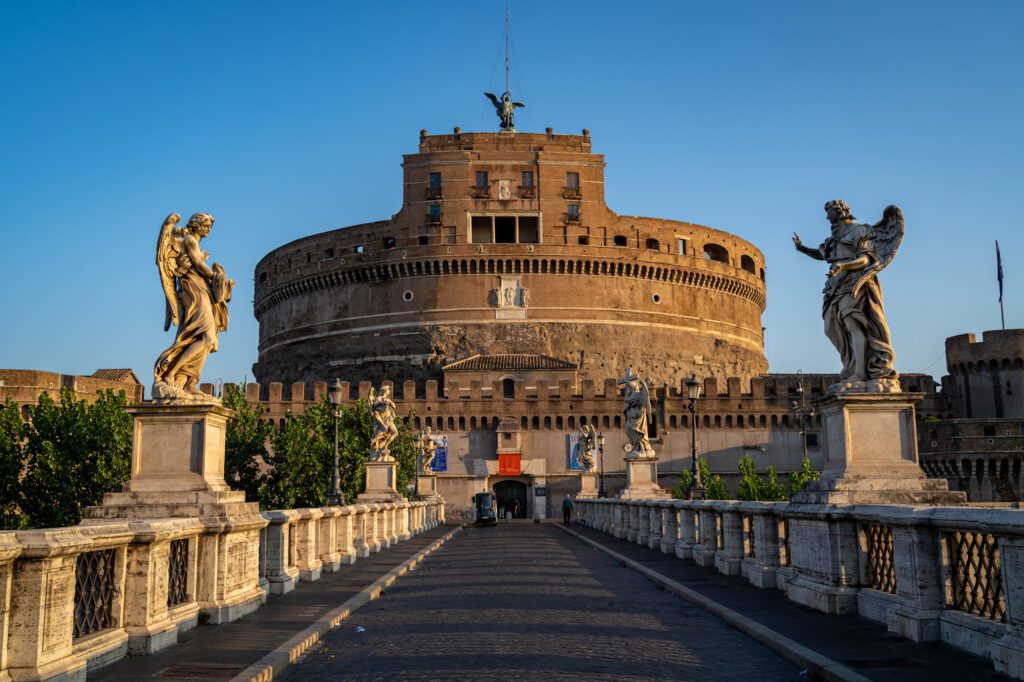
Similar to Paris, we think this is all about expectations.
A lot of people going to Paris have this picture-perfect fairytale version of Paris in their minds, and when they arrive, they realize the reality is that it’s a big city with familiar big city problems like traffic, trash, and the vague smell of dog urine.
Rome suffers from a similar problem, we’d say.
It’s the crown jewel of the Roman Empire, with ruins from centuries ago waiting around every corner (this is sort of true, actually) and narrow cobblestone streets to wander endlessly (this is also sort of true, in pockets).
The reality is that Rome is also home to a hair under 3 million people, which means it’s not all fairytales and quaint cobblestone streets.
There will be traffic, there will be honking horns, and you will almost certainly nearly suffer serious injury by motorized scooter as you attempt to cross the street.
However, that is all a part of the recipe that makes Rome special, and having that perspective going into your time in the Eternal City will, we hope, go a long way to helping you plan an amazing trip.
That unbridled energy and sense of history and scale as you wander the crowded streets of Rome is a feeling that you won’t find in many places, particularly in the United States where our cities are only a couple hundred years old.
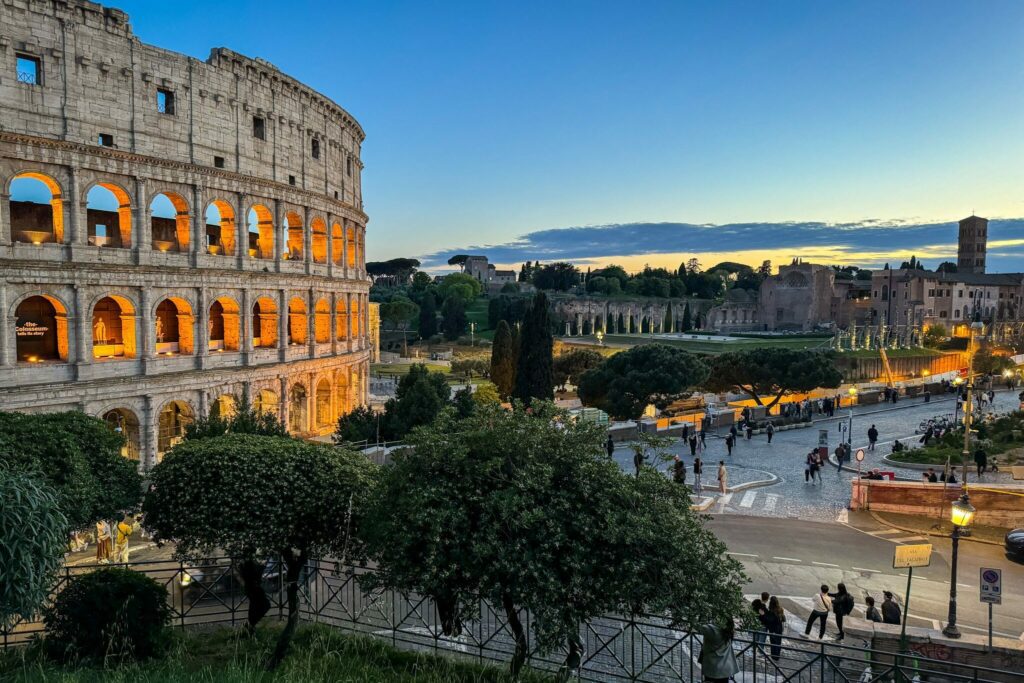
Is it full of tourists? Definitely. Does that mean it’s not full of great history, culture, and of course, food and drinks? Definitely not.
You just have to know where to look, and the best way to figure that out is to talk to locals as much as possible (walking tours are great for this).
As we said, we love Rome, and if you approach Rome with the mindset that it’s a living breathing big city that is also sort of an open-air museum, we think you will too!
Getting From the Airport to Rome
In all likelihood, you’ll be flying into Rome’s Fiumicino Airport (FCO), which is the busiest airport in Italy.
The easiest way to get from the airport to the city center is going to be taking the Leonardo Express, an air conditioned train that runs directly from the airport to Termini Station, Rome’s main train station.
The advantages here far outweigh the disadvantages. You’re not subject to the near-constant traffic in Rome, it’s clean, comfortable, and affordable, and it’s easy to find in the airport.
The only downside is that, depending on where you’re staying, you might need to take a taxi or bus from Termini Station to your hotel.
If you’re coming from within Europe (especially on a budget airline), there’s a chance you’ll come into Ciampino Airport (CIA), which is far more limited in terms of ways to get to the city center, but takes about the same amount of time in the end if you take the Ciampino Airlink.
What to Do in Rome
Here are some things that we think you definitely shouldn’t miss while you’re in Rome.
Our most important tip here is to not do multiple big attractions (e.g. the Colosseum, Vatican, or Borghese Gallery) on the same day, because you will be exhausted by the time you START the second attraction.
That’s also part of the reason why we recommend 2+ days in each city – so you have time to split things up and do the main attractions on separate days.
Obviously, there is a TON more to do and see in Rome, and we’d point you to our guide to what to do in Rome, and our detailed 4 day Rome itinerary, which have all of our tips, tricks, and picks based on our experiences exploring the Eternal City.
Here are the things we think you absolutely shouldn’t miss in Rome.
The Colosseum & Roman Forum
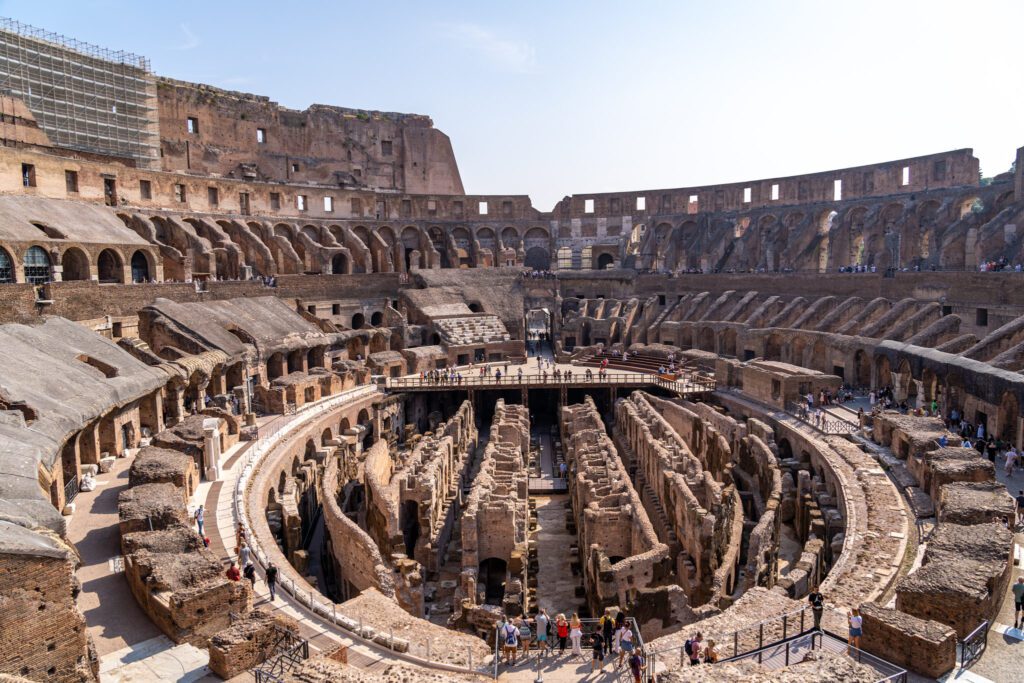
The Colosseum and Roman Forum are the first of the two big tourist attractions in Rome, and it’s something you’re not going to want to miss.
First of all, we’d highly recommend heading to this garden early in the morning or late at night for an excellent view (and picture) of the Colosseum, and this viewpoint for a great view of the Forum from above.
Second of all, if you only have time or budget for one guided tour in Rome, it should probably be here.
It’s hard to wrap your head around what you’re seeing as you walk through the mostly crumbling buildings, and a guide will help you contextualize and comprehend the history you’re seeing, which will lead to a much richer experience in the end (which is what we’re always looking for!).
We have personally done both this guided tour, which is a great dive into this rich piece of history, and also this nighttime VIP tour, which takes you under the floor of the Colosseum at night, when it is MUCH quieter than the daytime tours (but, crucially, DOES NOT visit the Forum).
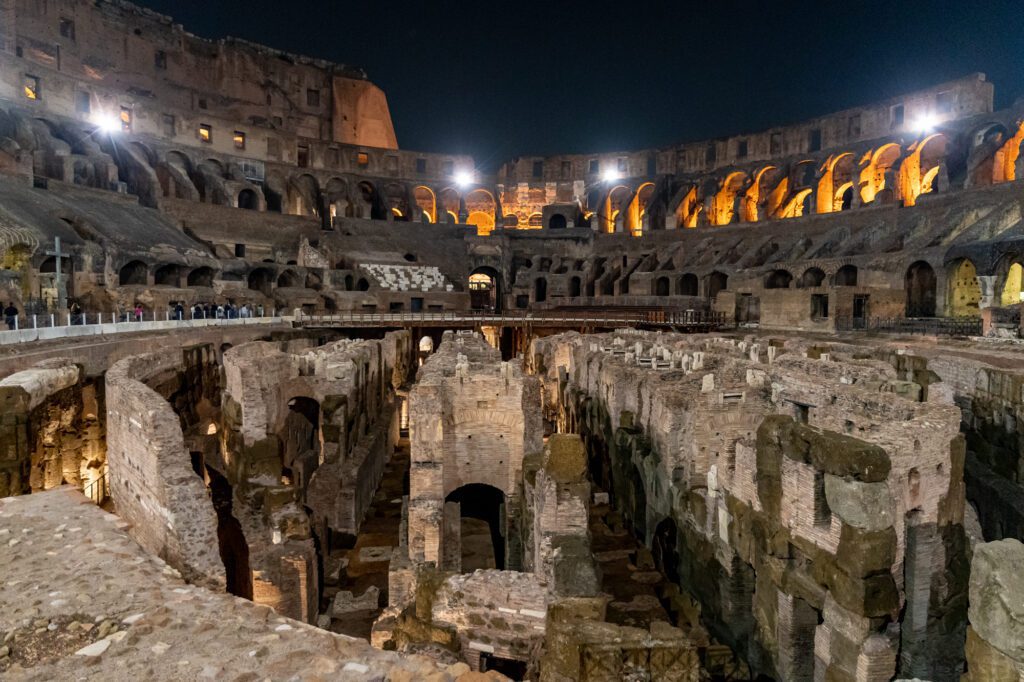
Both are with Walks of Italy, our favorite tour company in Italy – you can read more about our experience on the Colosseum tour that challenged our preconceived notions.
We have an entire separate guide dedicated to visiting the Colosseum with all the important information you need to know – like what to see, how to get tickets, and the best time to visit – which you should read for far more detail than we have here.
Marvel at the Collection at the Vatican Museums (and St. Peter’s Basilica)
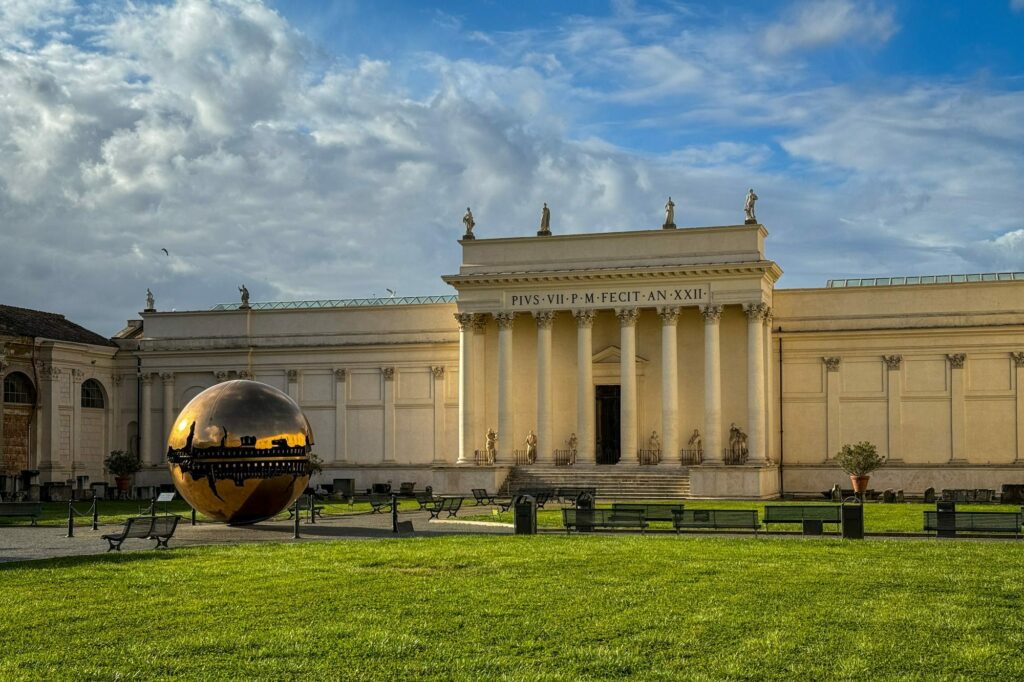
I have now visited the Vatican Museums and St. Peter’s Basilica four separate times across multiple trips, and I can confidently say that I still don’t think I’ve seen everything.
The Vatican Museums is a truly mind blowing collection of art that the Catholic Church has either accumulated or commissioned over the course of its centuries as one of the main power centers in Europe.
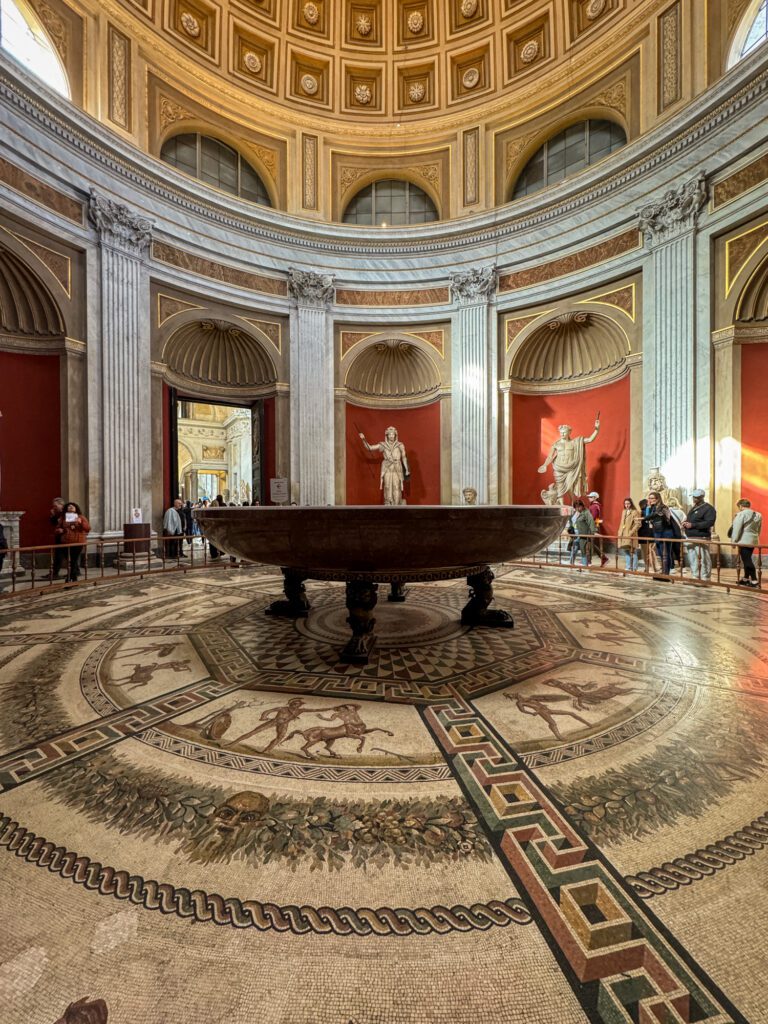
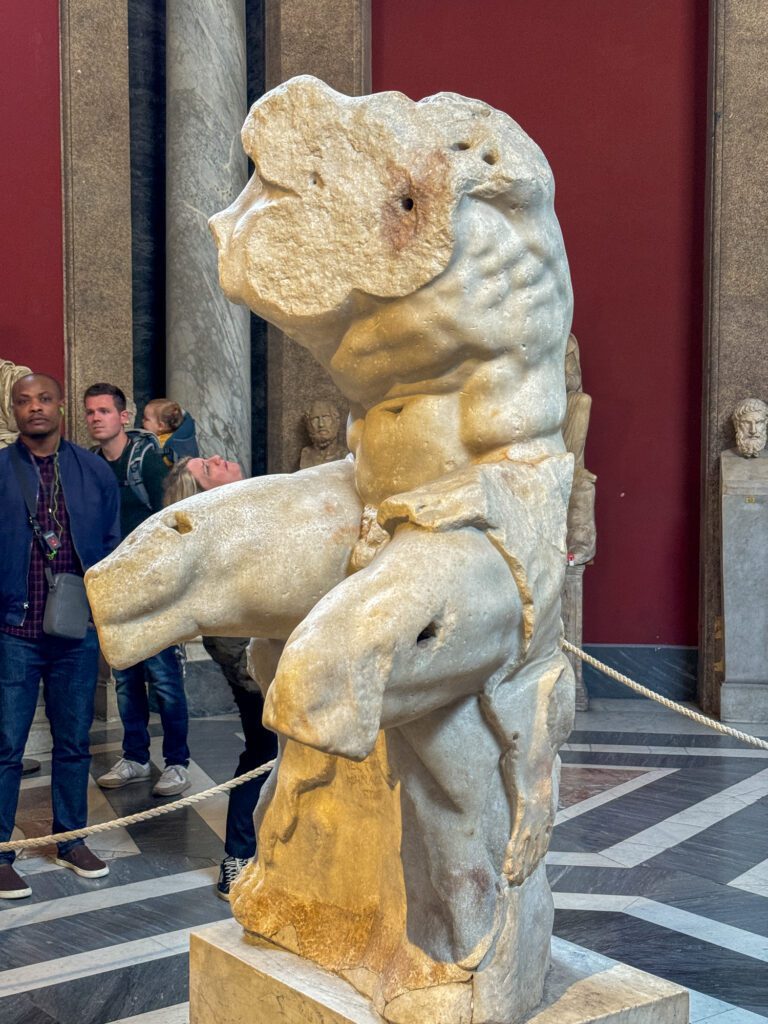
There are two aspects here – the Museums (which includes the Sistine Chapel) and St. Peter’s Basilica, and you’ll want to see both. It’s going to take the vast majority of the day to do both, because it’s A LOT.
The other thing we’d say is that you’ll want to get in as early as humanly possible, because it’s EXTREMELY busy and claustrophobic at peak times. Book your entry tickets well in advance, and select the earliest time slot of the day.
On my last trip, I did this early morning tour with Walks of Italy, which was great (however, it is worth noting that there will be other people in the Sistine Chapel due to changes that the Vatican has made to visitor hours over the past few years).
We have an entire guide to visiting the Vatican with more details like the best time to visit, what to see, and how to buy tickets, which you should read as you’re planning your trip.
Walking the Centro Storico (in the early morning!)
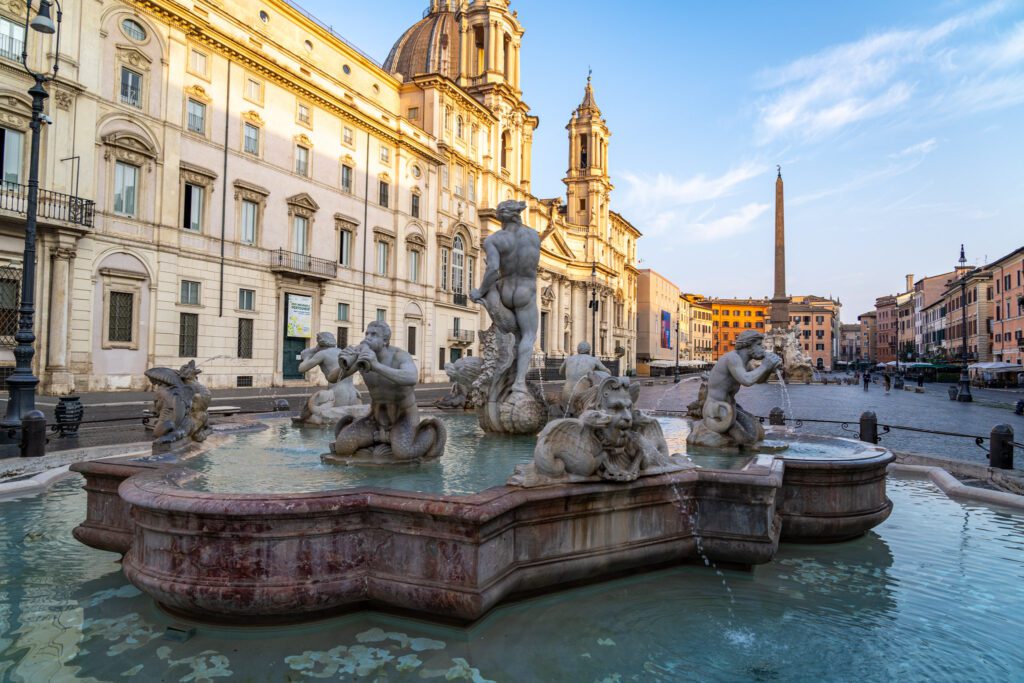
The Centro Storico is Rome’s historic center (though most of the ornate fountains and buildings you see today are actually from the Baroque period in the 17th century, ish).
It’s a treasure trove of the most famous sites in Rome, including Piazza Navona, Campo de’ Fiori, the Pantheon, and, of course, Trevi Fountain.
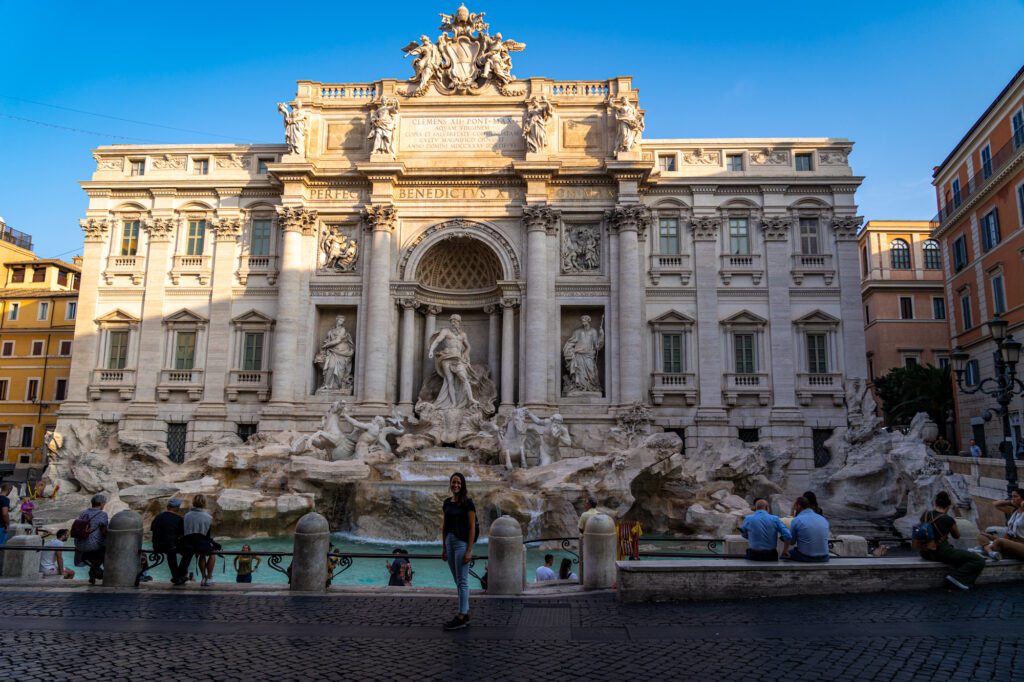
Once again, this is something you should do as early in the morning as you possibly can because otherwise, the cobbled, narrow streets in this part of the city are packed wall-to-wall with visitors all wanting to see the same things you do.
Get out here between 7am and 8am and it’s a much different story. Here’s a route that we have done multiple times, and gets you to the main sites (start from the northern end, and don’t skip Terrazza del Pincio for excellent views of the city).
Along the way, stop at either Tazza d’Oro or Sant’ Eustachio for a quintessential Italian coffee experience (stand at the bar, order a cafe or cappuccino, and enjoy the ruthless efficiency of the baristas).
Spend an Evening in Trastevere
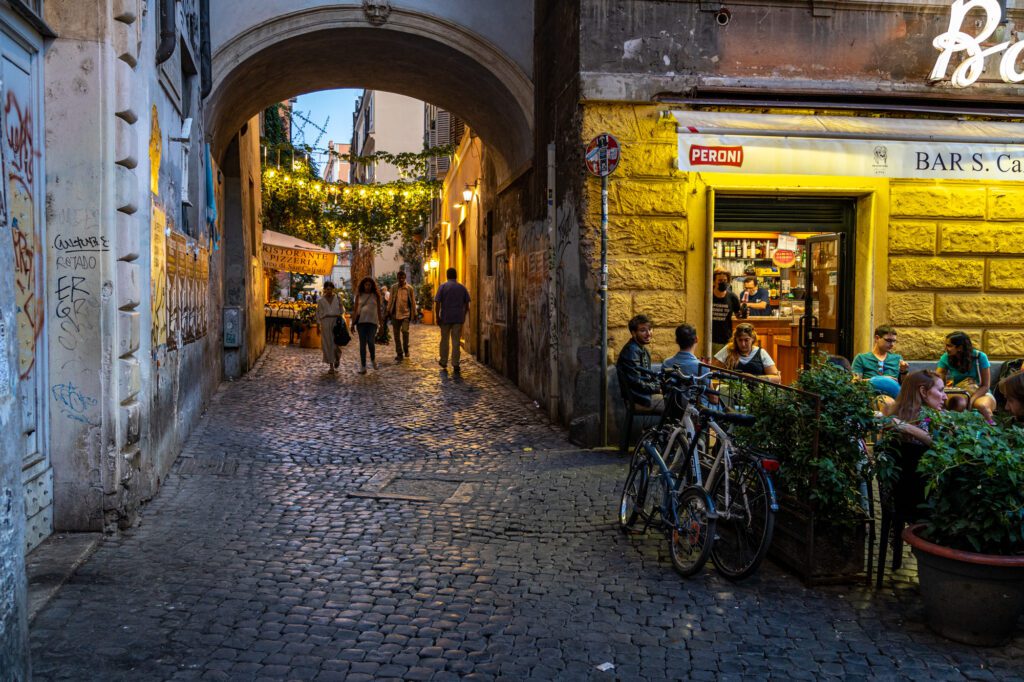
Trastevere is our favorite part of Rome. It’s all narrow cobblestone streets, charming piazzas, a lively atmosphere, and great places to eat and drink.
We think it’s at its best in the evening, when it’s packed with people wandering the streets, eating on one of the many al fresco patios, and hanging out in its many piazzas.
A few favorites: Fatamorgana for gelato, Les Vignerons for a nice selection of beer and wine by the bottle, Supplì Roma for a Roman classic (similar to arancini in Sicily), and Enoteca Cuverie for a nice, quiet wine bar in a quieter part of the neighborhood.
Seek Out the Best Views in Rome
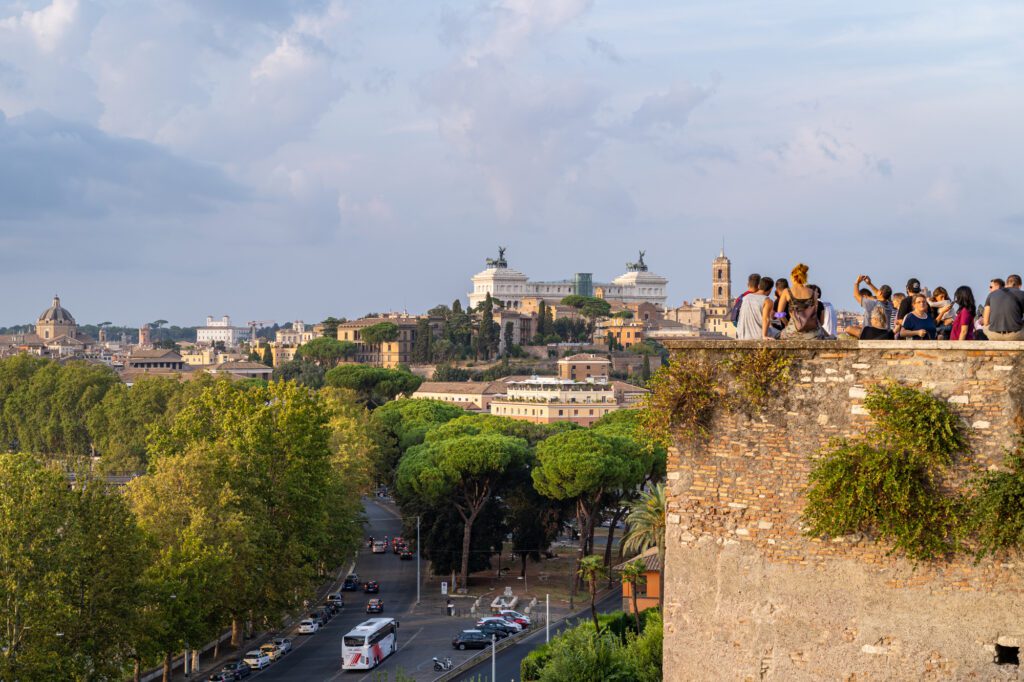
One of our favorite parts about Rome is the view from above, because it’s a sea of domes as far as the eye can see (almost literally).
We have a couple of favorite viewpoints, including the previously mentioned Terrazza del Pincio (here on Google Maps).
We also really like the view from the Giardino degli Aranci (“Orange Garden” – here on Google Maps) and from the top of Castel Sant’Angelo (which is definitely worth a visit – here on Google Maps).
One last viewpoint is the walk up to Piazza Garibaldi, which is a piazza above Trastevere with excellent views of the city (here’s a route that takes you to a couple of other nice sites along the way).
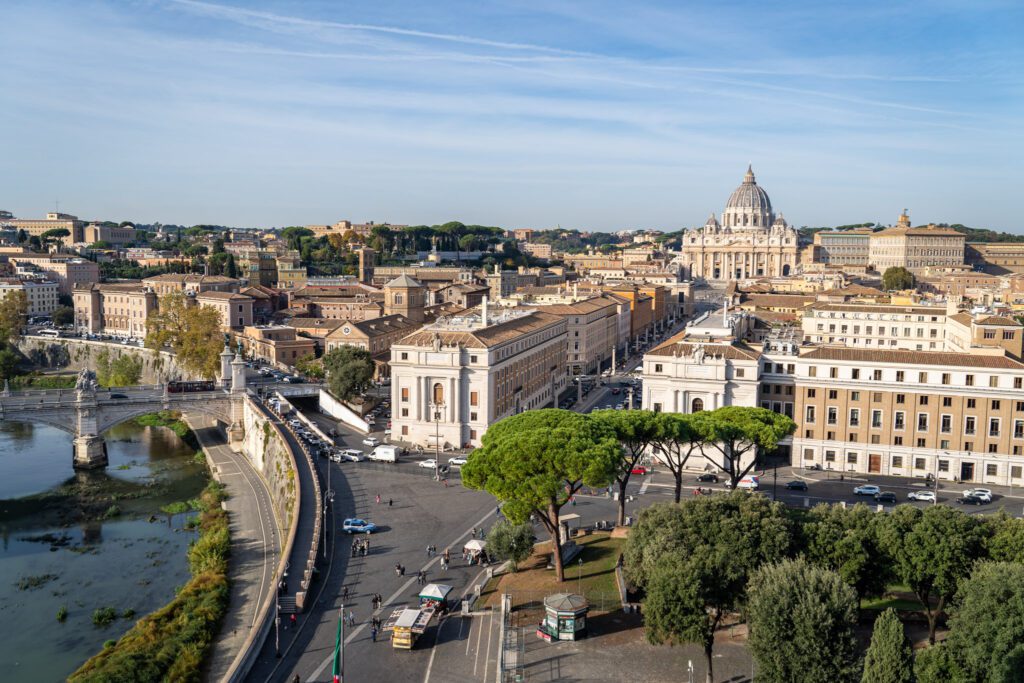
Where to Stay in Rome
Despite being a massive city with three million people (ish), Rome’s historic center is actually fairly compact (and very few of those residents actually live there).
With limited time, you’re going to want to stay relatively central so that you’re spending your time exploring, not in transit, and there are plenty of great neighborhoods to choose from.
We absolutely love Trastevere (and have stayed there multiple times), which is a slightly less convenient location than some of the more central areas that more than makes up for it in terms of charm and places to eat and drink.
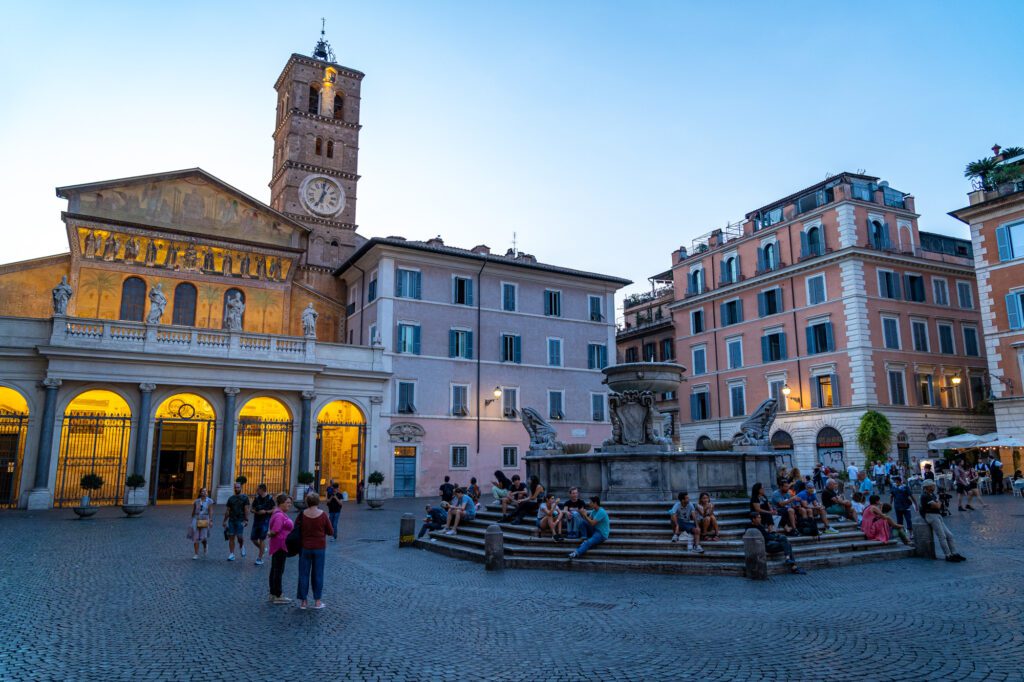
If it’s your first time in Rome, we also love the part of the Centro Storico (historic center) around Piazza Navona, which is both about as central as it gets and also one of the most charming parts of the city that also manages to have some of our favorite places to eat and drink.
We have an entire guide dedicated to helping you decide where to stay in Rome, which you should absolutely read for far more detail.
If you don’t have time to go and read a novel, here’s the summary:
Our overall recommendation is to find a charming hotel or guesthouse in Trastevere, which is far and away our favorite part of Rome. Cobblestone streets, energetic piazzas, and some of the best bars and restaurants in Rome? Sign us up!
For what it’s worth, we recently stayed at Horti 14, a beautiful hotel in a quiet part of Trastevere that’s walkable to the Vatican and the Centro Storico, and loved it.
If it’s your first time in Rome, you can’t go wrong with the Centro Storico (particularly the area closer to Piazza Navona and Campo de’ Fiori).
Stay at either the CitizenM Isola Tiberina (we love CitizenM Hotels!) or Casa Pietra if you’re looking for a charming guesthouse with helpful, friendly staff and a great location.
If you’re looking for an apartment with more space and a kitchen, check out these apartments near Piazza Navona, where we spent five days on our trip a few years ago.
If you’re looking for a slightly different experience, look at Monti, a hip part of Rome that’s near the Colosseum and Forum, and is packed full of bars, restaurants, cafes, and more.
Matt stayed here on his last trip to Rome, and found it to be a pretty perfect location to use as a home base.
It’s a good central location, and generally feels much younger than, say, the Centro Storico. Salotto Monti is a great combination of stylish and affordable (it’s also where I, Matt, recently stayed).
Days 4-7: Florence & Around
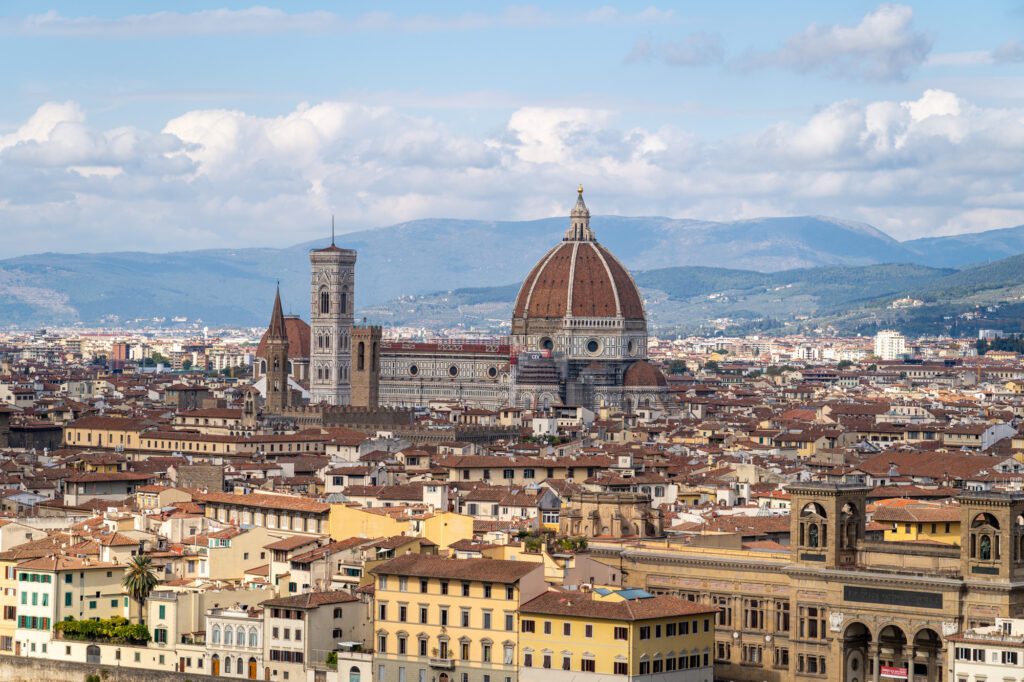
Florence is a different beast than Rome, and provides a nice contrast from what you’ll have experienced in Rome.
Its rise came at a vastly different time – somewhere around the 14th and 15th centuries – and the result is a city that looks and feels extremely different from Rome.
It’s compact and relatively organized, compared to Rome’s neverending sprawl and narrow winding streets.
Florence is compact and busy – especially in the historic center, which is almost always packed with tourists – but doesn’t have the same “am I going to get run over by a scooter crossing the street” vibe that Rome does.
The thing that always stands out to me about Florence, though, is the opulence and architectural flair that you see.
Yes, the Vatican is about as opulent as it gets, but the rest of Rome (save the beautiful marble fountains scattered around the city) is fairly modest.
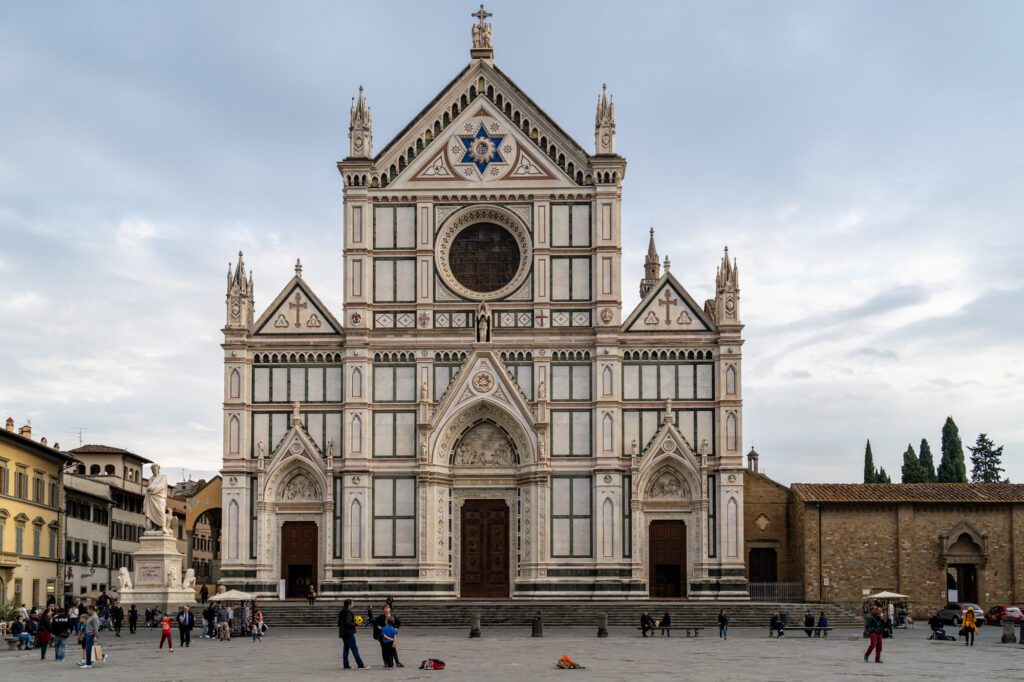
The sheer amount of wealth that flowed into Florence during the 14th and 15th centuries is mind-boggling, and is a big part of the reason why it is one of the most visited cities in Europe half a century later.
Florence was one of the wealthiest cities in the world at that point, and was on the forefront (perhaps even the birthplace) of the Renaissance. Contrast that with Rome, which has not been a terribly wealthy city in the past 1,000 years (if not more).
The difference between Rome and Florence is kind of like the difference between the Colosseum and Roman Forum and the Vatican Museums and St. Peter’s Basilica.
The first is a big important historical site, but it’s relatively modest in its decoration (as modest as a massive arena built a couple thousand years ago can be), the second is much more ornate and projects the obscene wealth that went into the commissioning of the various pieces of it.
The thing to keep in mind here is the fact that the relationship between wealth and art flows in that direction. Wealth brings the ability to commission the most famous artists in the world to create all the beautiful art you see in Florence today.
The other great thing about Florence is its central location within Italy, which means there are a plethora of great day trip options to choose from depending on what experience you’re looking for.
From wine tasting to walled cities and the best food city in Italy, we’ve intentionally added a couple of days in Florence so that you have the time to go out and explore some of those places.
Obviously, having done a bunch of the day trips ourselves, we have thoughts and feelings, which we’ll share below to help you sort through the options.
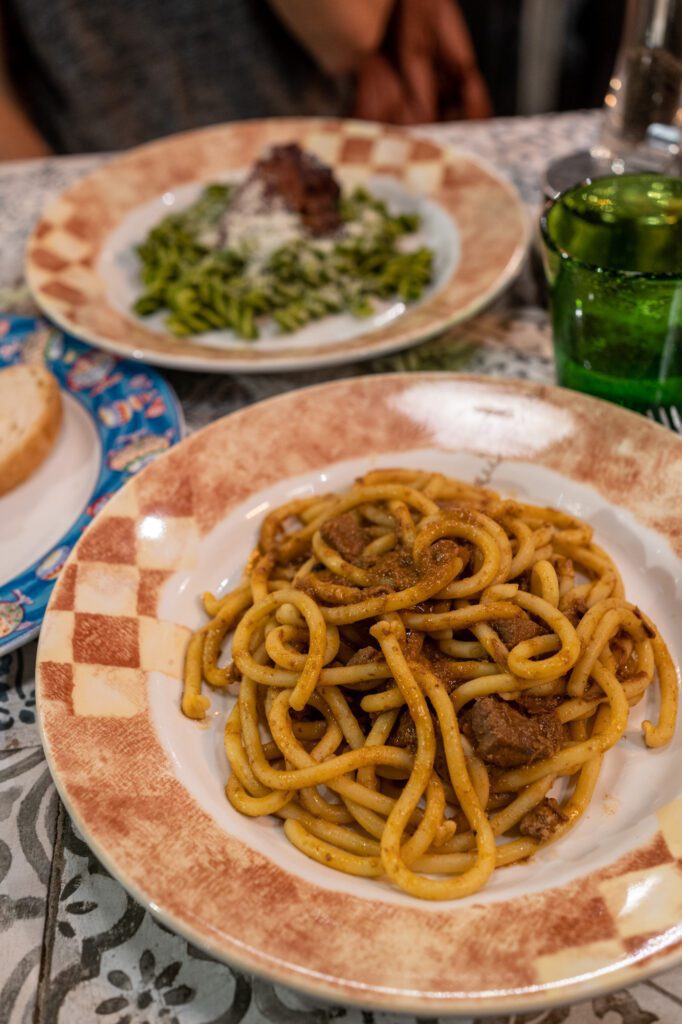
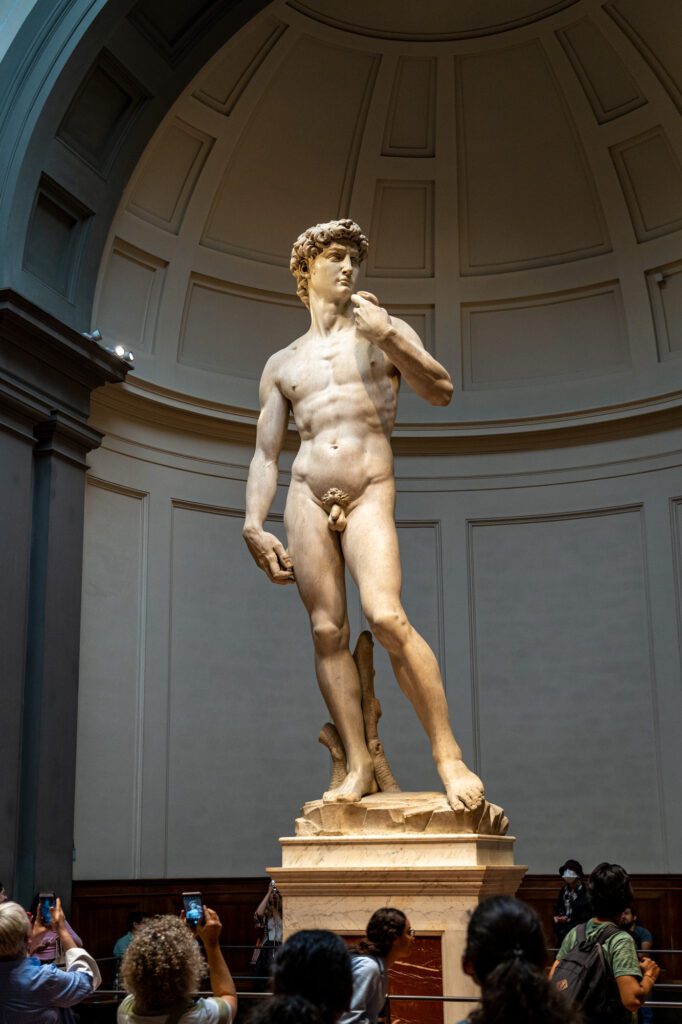
Getting From Rome to Florence
From Rome, it’s a quick and easy high speed train ride to Florence. You’ll leave from Rome’s Termini Station, and you want to arrive at Santa Maria Novella in Florence. There are many, many trains running this route each day.
To maximize your time, you’re going to want to book either the “Frecciarossa” or “Italo” trains, which cover the distance in an hour and a half (versus three hours or so on a regional train line).
For your purposes, Frecciarossa (run by Trenitalia, the national rail company) and Italo (run by a private company) are essentially the same. Pick whichever one is best in terms of timing and prices.
What to Do in Florence
Here are some things that we think you definitely shouldn’t miss while you’re in Florence.
Obviously, there is plenty more to do, see, eat, and drink in Florence.
For more, we’d point you to our guide to what to do in Florence, and our detailed 3 day Florence itinerary, which have all of our tips, tricks, and picks based on our experiences exploring the capital of Tuscany.
The Uffizi Gallery

If you only have time for one tour in Florence, this is by far our top pick for the destination.
The Uffizi Gallery is a collection of art that focuses on the Renaissance, and it’s organized in (roughly) chronological order so that you can see the progression as the movement took hold of the artists working in Florence.
I’ve done it three times – once on my own, and two separate tours – and I’d highly recommend a tour here, if you can swing it.
A tour is going to help you understand the pieces themselves – there are countless details in each piece of art that we never would notice without someone explaining them to us – and how they fit into the broader story of the Renaissance and its impact on art history.
Of the tours I’ve done, this tour was by far the best crash course, and it ends inside the museum so you can spend more time, if you’d like.
The Statue of David
I’ve read a lot of travel guides about the famous statue of David, which is housed inside the Galleria dell’Accademia di Firenze today, that say something to the effect of “just go see the replica of the statue in piazza della Signoria, which is free.”
And, if you have limited time, I would definitely focus on the Uffizi Gallery.
However, I do think that there is a lot of interesting work from Michelangelo in the Accademia that tells a story of how he worked his way to making the David.
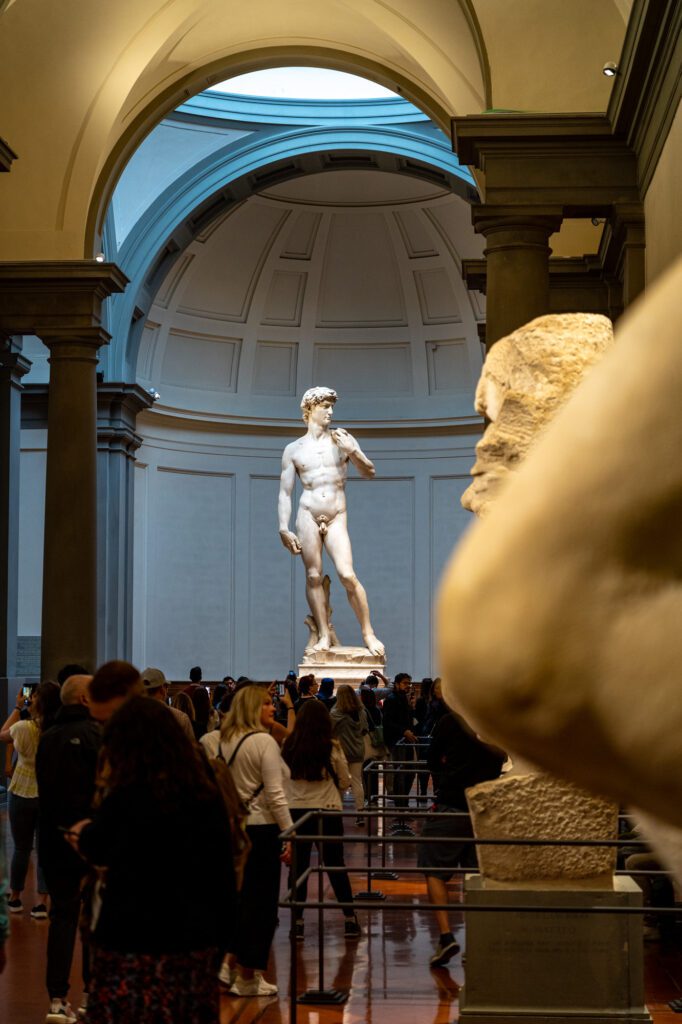
If you’re interested in that progression and the artist’s fascination with the human body, it’s worth spending an hour or two in the Accademia (and seeing the statue in that context here you can walk all the way around it is also cool).
Book your tickets well in advance – we’re talking as soon as you know you’ll be in Florence – to avoid standing in the ticket office line (you will still have to stand in the security line), which you can do on the official website.
I’ve also done this guided tour of the gallery with my mom, which allows you to skip the long lines (and get tickets if they’re sold out through the official site) and it was a great overview of the story of Michelangelo and his career leading up to creation of the David.
The Duomo di Firenze
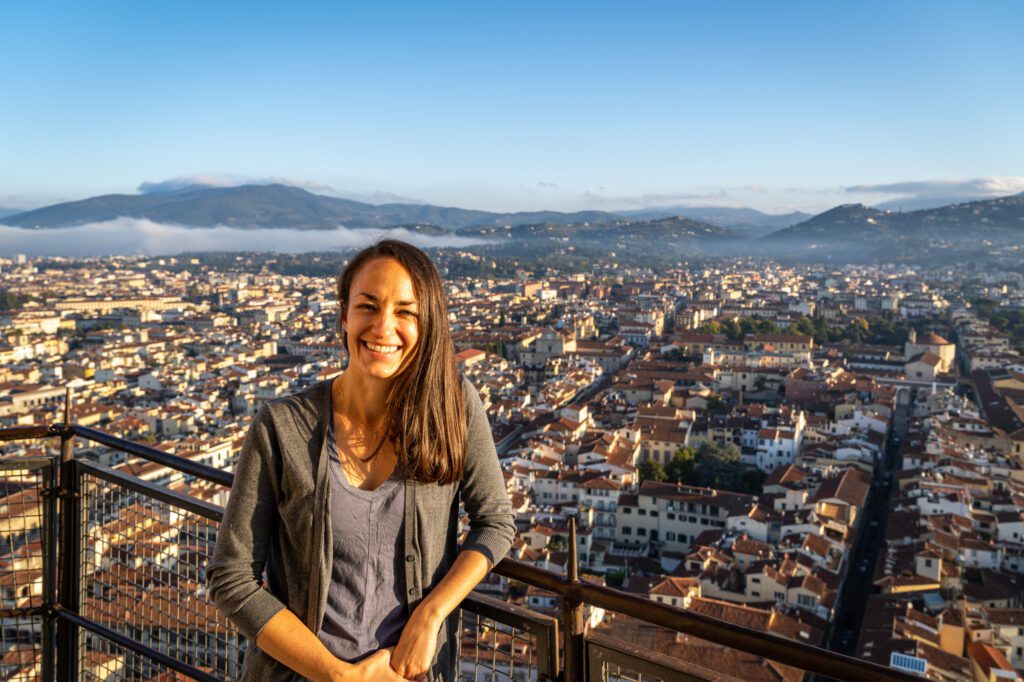
The Duomo di Firenze (also known as the Cattedrale di Santa Maria del Fiore) is massive, and is the centerpiece of Florence’s historic center.
It was constructed over the course of 150 years or so, starting at the end of the 13th century and being consecrated in 1436 (though the facade wasn’t actually completely finished until the 19th century).
There are multiple components to see here, and of them all, the one we’d focus on is Brunelleschi’s dome, which is impressive both on the inside and the outside, where you’ll find sweeping views out over the city of Florence.
The climb to the top of the dome does require a steep, narrow staircase with 400+ steps, which isn’t for everyone.
However, you get excellent views of the interior of the dome as you pass along a walkway just below the dome (which can get claustrophobic as people stop to marvel at the art).
You can buy tickets here, and if you want to climb the dome, you’ll need to get the “Brunelleschi Pass” – the only ticket that includes climbing the dome. Choose either the earliest or latest time slot for the smallest crowds.
Piazza Michelangelo & Oltrarno
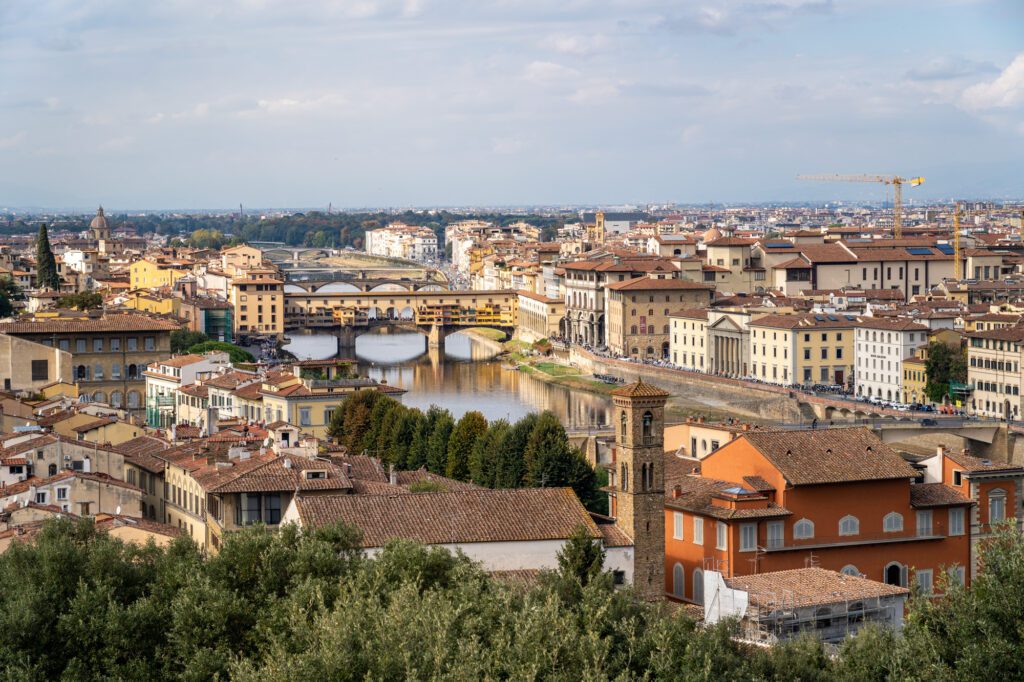
Aside from the view from the dome, this is probably our favorite view of Florence.
It’s on the other side of the Arno River (the river that runs through Florence), and it’s worth spending an afternoon exploring this less-visited neighborhood (though, it’s still Florence, so expect to see plenty of tourists).
Our recommendation would be to walk up to the piazza and back down through Oltrarno, stopping for wine at Le Volpi e l’Uva (which has wine from all over Italy, including some local varietals), gelato at Gelateria Della Passera (recommended by Alysha AND our host at a local winery), and Ditta Artiginale for coffee (Matt’s favorite coffee on this side of the river) on your way down to Piazza Santo Spirito, the beating heart of the neighborhood.
Here’s a map of the route with our favorite stops on Google Maps.
Take a Day Trip to Bologna
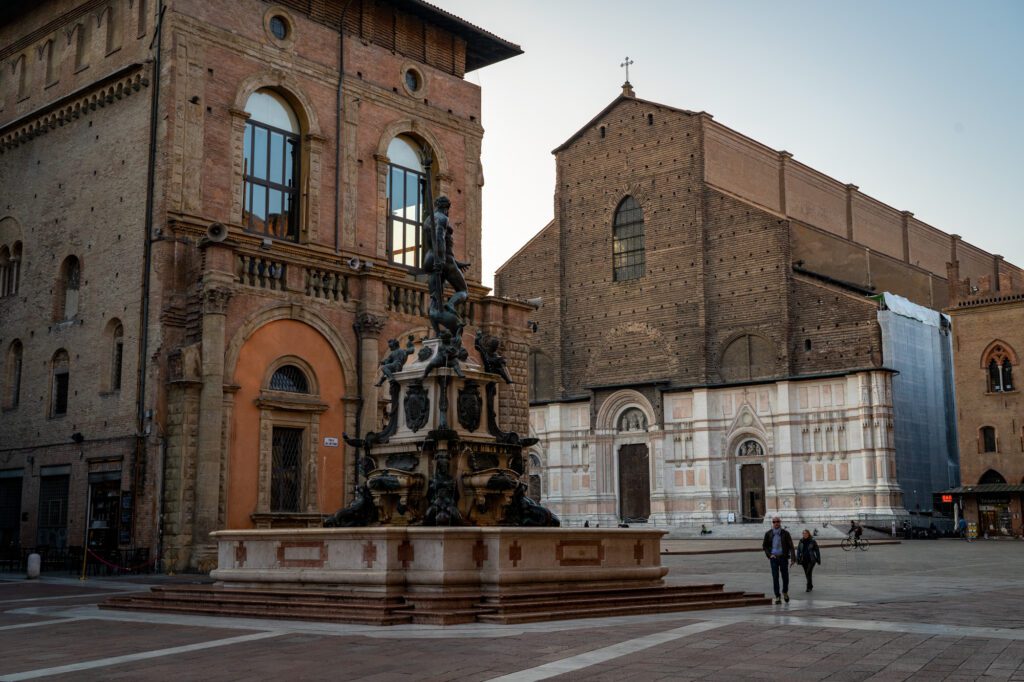
Bologna is the capital of Emilia-Romagna, the region immediately north of Tuscany, and it’s our favorite city in Italy.
First of all, the food is unparalleled. Bolognese, prosciutto di Parma, balsamic vinegar of Modena, parmesan-reggiano, mortadella – it all comes from the area around Bologna!
Plus, it is a gorgeous college town with a youthful energy and a TINY fraction of the tourists you’ll see in most other cities in Italy.
We love Bologna, and it’s the first place we’d add more time if you have it (for more, see the “with more time section” below the itinerary).
We have an entire guide dedicated to spending one amazing day in Bologna, which has all the details you need to plan your day trip (including how to get there, what to do and see, and what to eat and drink).
Take a Day Trip to Siena
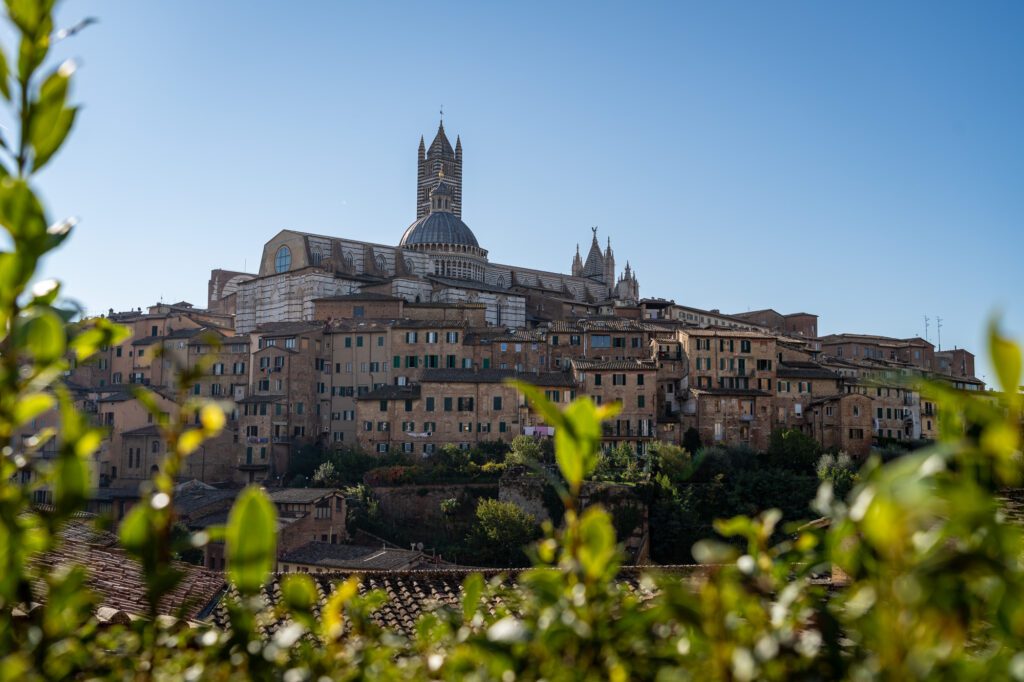
Tuscany – the broader region that Florence is the capital of – is known for its hilltop towns, which dot the landscape in the heart of Tuscany to the south of Florence.
Siena is, perhaps, the best example of this phenomenon. More importantly, it’s the most accessible by public transportation, and it’s an easy train (or bus) ride away from Florence.
When you’re in Siena, we definitely wouldn’t miss the Duomo di Siena (and its incredible tiled floor, if it’s uncovered for the season!), the climb up to the Facciatone (observation deck with great views of the cathedral), and this walking tour that we enjoyed, which gives you a great overview of the city and its history as a powerful city-state in central Italy.

Where to Stay in Florence
Florence’s city center is pretty compact as big Italian cities go, which means it matters slightly less where you stay because it’s all within a 15 minute walk of the main sights.
However, there are two areas that stick out in our minds as our favorite neighborhoods in Florence.
The first is Santa Croce, which sits just west of the historic center (where you’ll find the Duomo and Piazza della Signoria) along the Arno River and is much more low-key, with some of our favorite places to eat and drink in town.
The second is actually across the river from the historic center, and is fittingly called Oltrarno (“the other side of the Arno,” roughly). While the vibe in the historic center is a little more tourist-heavy (as in there are no local residents because who the heck would want to live there), Oltrarno is heavy on the charm and less heavy on the tourists.
Yes, of course there are still tourists – it’s Florence, after all – but there are far fewer places to stay and more residential housing, which gives it a more lived-in feeling (which we absolutely view as a positive).
For all of the details behind this summary below, we’d point you to our more detailed guide to the best places to stay in Florence, which has a complete neighborhood guide for the neighborhoods mentioned above.
If you’re looking for the short version, here’s a summary of the best places to stay in Florence:
If it’s your first time in Florence and you want to be right in the middle of all the action, stay in the Centro Storico. It’s charming, central, and full of good places to eat and drink (and, of course, some not-so-good options too). It’ll be a bit more expensive, but it’ll be worth it. We’re drooling over Hotel Milù.
If you’re looking to stay in the coolest neighborhood in Florence with plenty of places to eat and drink within a few steps of your front door, stay in Santa Croce.
Plus, this is where Michelangelo grew up (and, later, he was buried at the Basilica di Santa Croce).
We stayed here on our last trip and loved it. We stayed at Pietrapiana Boutique Apartments to have access to a kitchen and loved it. For a more traditional hotel, stay at La Maison du Sage.
For something a little more low key and, usually, cheaper, stay in Oltrarno. It’s a lovely part of town in its own right, and it’s a short walk or bus ride over to the Centro Storico and all the main sights.
What to Add With More Time in Italy
Here are the things we would consider adding to your itinerary if you find yourself with more time, in the rough order we’d add them in.
Note that we do have two longer itineraries – one for 10 days in Italy, and one for two weeks in Italy – that you should check out for exactly how to put it all together.
Venice (+2-3 Days)
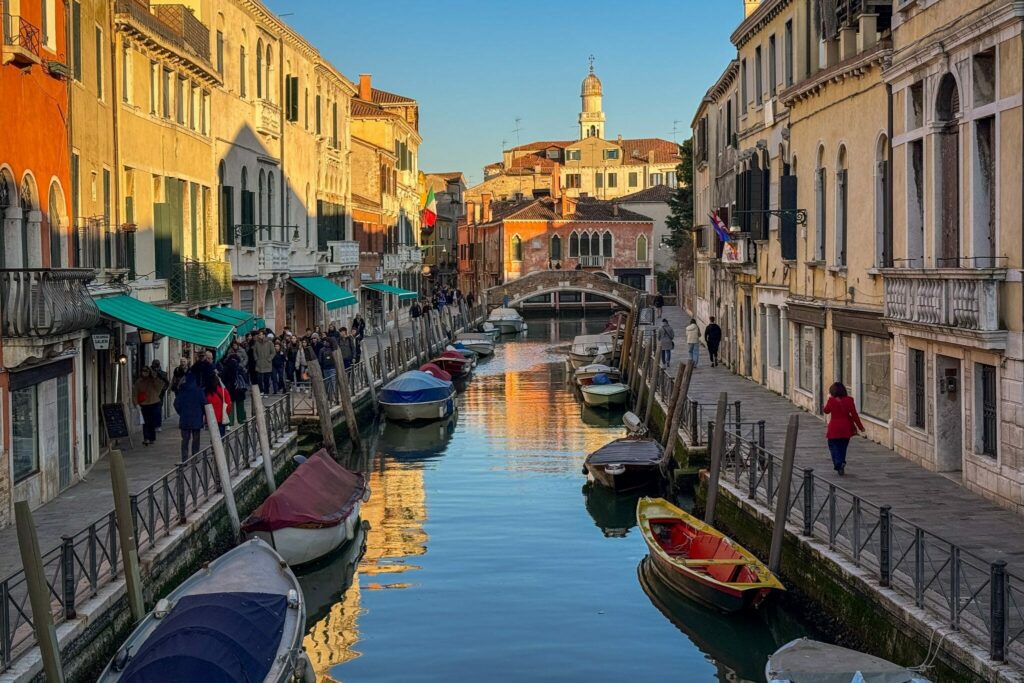
At this point, we’ve both been to Venice multiple times – including a recent trip this spring – and before that trip, we firmly believed that we were never going to set foot in Venice again.
It’s beautiful, yes, but it is constantly packed beyond its real capacity, and at times it feels more like a zoo than a city (as in, you’re the zoo animal in a cage of never ending narrow streets packed wall-to-wall with tourists).
However, we also completely understand the inclination to want to see Venice, because once the canals have mostly cleared of all the day trippers and cruise shippers and the sun dips below the horizon, it’s a pretty magical place.
As we’ve covered, one of our favorite parts about exploring Italy is its regional diversity, and Venice is a completely different side of Italy than Rome and Florence.
In Venice, you’ll find more influence from the sea and the connections it brought the Venetian Republic, which was one of the most powerful states in the Adriatic for centuries.
If you do add Venice, you’d want to do Rome, Florence, then Venice (because of its location at the northeastern corner of Italy), and fly home from Venice.
We have plenty of guides to help you plan your time in Venice. In general, we’d recommend AT LEAST two days, but three is better.
Here are our guides for more reading on how to spend your time and where to stay.
- 3 Days in Venice: A Perfect Itinerary for First Timers
- What to Do in Venice: A Complete Guide (for First Timers)
- Gluten Free Venice: A Complete Guide for Foodies
More Time in Bologna (+1-2 Days)
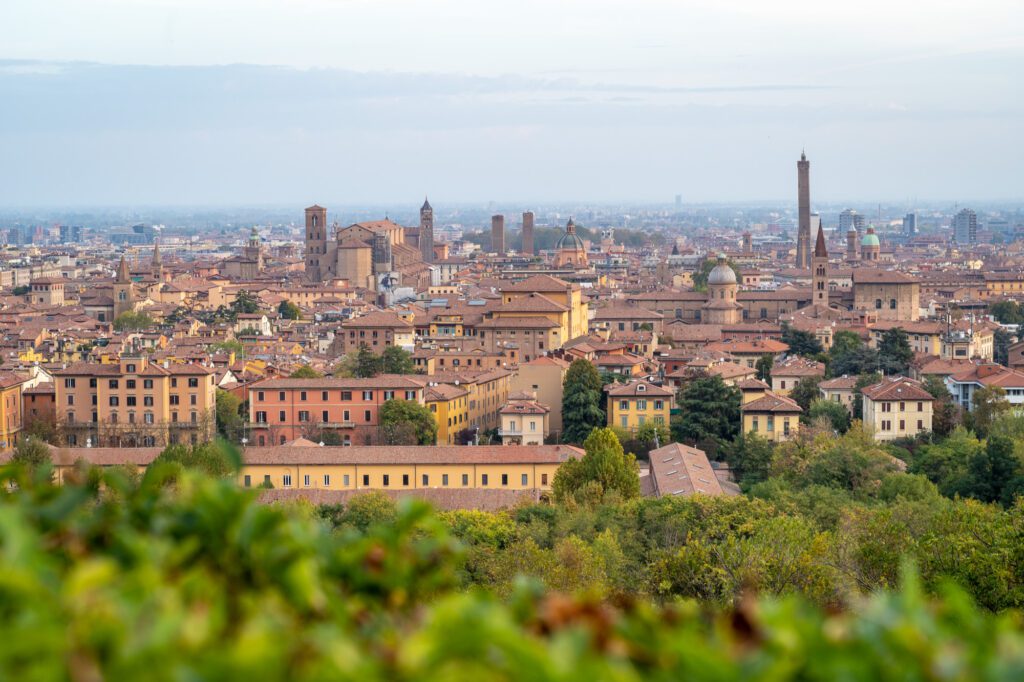
Look, we love Bologna, and would broaden that statement to include Emilia-Romagna, the region that it’s the capital of.
The food is great, the wine is great (we’re big fans of lambrusco, a fizzy red wine), and the city is far less visited by American tourists than the other big cities on this itinerary.
That last fact, combined with the big student population, makes Bologna the city that you’ll visit and say something like “I could totally live here” (which is likely not true of Rome, Florence, or Venice).
We recommended a day trip here in the main itinerary, and would tack on an extra day or two if you have it to really slow down a bit and soak up the vibe.
For how to spend more time in Bologna, head over to our 2 day Bologna itinerary and our guide to the best places to stay in Bologna.
Milan (+1-2 Days)
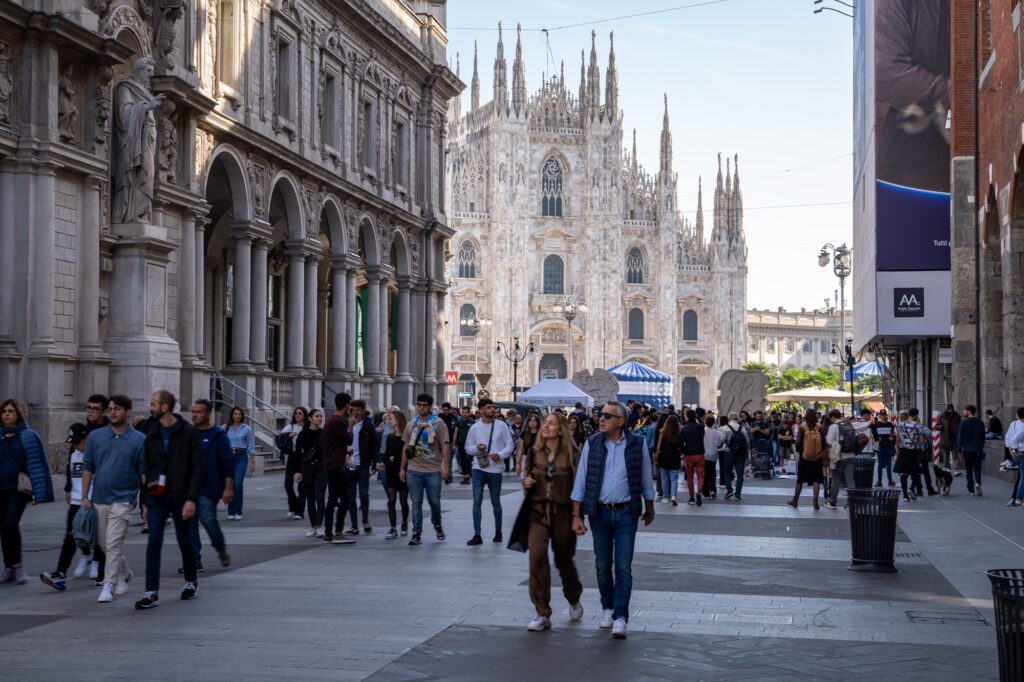
Milan gets mixed reviews from visitors we’ve talked to, and I think it’s another case of mismatched expectations.
If you’re coming from places like Rome and Florence, where you can feel the history seeping out of every surface in the city, Milan feels like it could be basically anywhere in Europe (Paris, Vienna, etc etc).
And, to some extent, it’s true that Milan looks and feels very different from other parts of Italy. It’s more cosmopolitan thanks to the fashion and finance industries – one look at the food scene with tons of Japanese food tells you this – and feels significantly more modern.
Historically, there is a bit of a rivalry between northern and southern Italy (that persists to this day), and Milan is very much seen as emblematic of the cold, distant northerners who speak Italian with a German accent and eat rice, not pasta.
However, we like Milan, and think it’s worth a couple of days to see the magnificent Duomo (where Napoleon crowned himself king of Italy, which is a thing that actually happened) and eat and drink your way through the bounty of northern Italy (think risotto and pinot grigio).
We have multiple guides to Milan, including a guide to spending one day in Milan and a guide to planning a 2 day Milan itinerary, which is where we’d start.
It’s also worth reading our guide to the best places to stay in Milan to figure out the best area for your needs.
Cinque Terre (+3-4 Days)
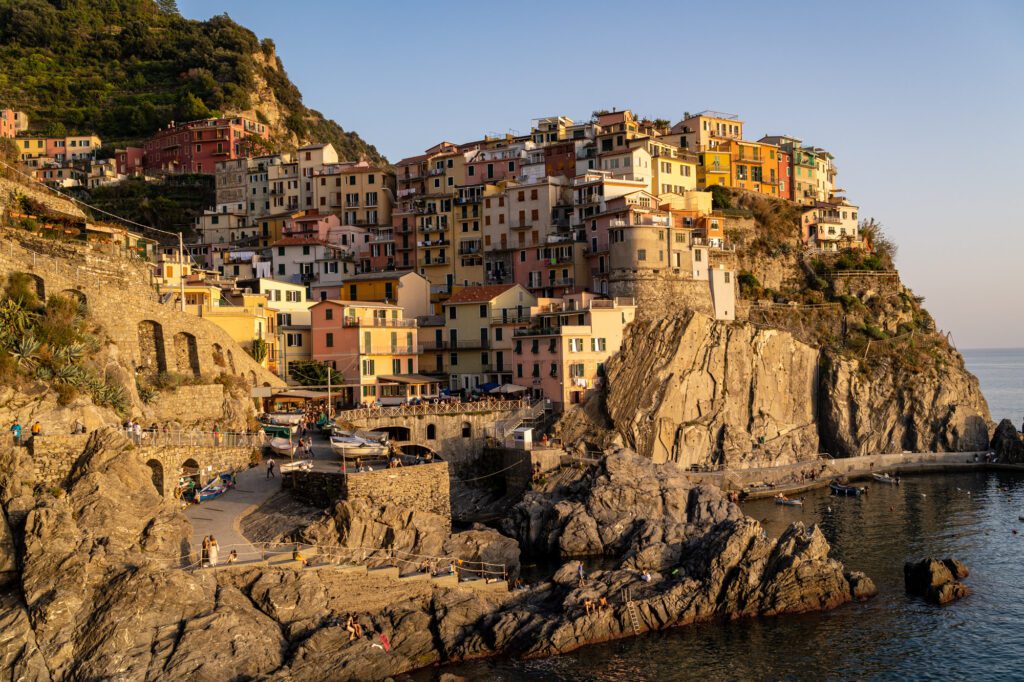
Of the two famous coastal regions in Italy (the other being the Amalfi Coast), we’d almost always choose Cinque Terre, which is basically due west of Florence. If you speak any Italian at all, you’ll already know that the name is as direct as it gets.
The Cinque Terre (five towns) are perched on the rocky coastline, which creates dramatic cliffs and beautiful scenes, especially as the light of the setting sun washes them in a soft, golden light.
However, the big problem with this part of Italy is that it is a PAIN to access, especially with limited time.
It’s going to take you at least three hours to get there, and another three hours to get back, and the easiest places to go to and from are Florence (which involves multiple trains) and Milan (where there’s a direct train).
Which is why we’re recommending it only if you have three or more days to spend.
For more, read our guide to the best things to do in Cinque Terre and our guide to planning a Cinque Terre itinerary.
What to Do with Less Time in Italy
Honestly, if you have less than seven days in Italy, we recommend staying in one city. You’ll have plenty of time to explore the city itself, plus do some day trips out to the areas nearby.
Your best bets for a 3-5 day trip are Rome or Florence, which offer you a nice blend of big cities with plenty to do and see with accessibility to nice day trips nearby.
Another option would be to choose Bologna, which is our favorite city in Italy (it has the best food scene in Italy) and sits at the crossroads of the high speed train routes, which means you’re a high speed train ride away from Florence (45 minutes), Verona (60 minutes), and even Milan (~75 minutes).
Planning a trip to Italy? We’d love to help!
Here are our other Italy travel guides to help you plan an incredible trip (even if you have to eat gluten free!).
If there’s no link below, it means we’re still working on it – long, in-depth guides take time! We’re working on it, though, we promise.
If you’re planning a trip and you’re not sure where to start, your first stop should probably be one of our detailed itineraries.
We have a two week Italy itinerary that blends the main cities with some less-visited cities that we love (BOLOGNA!), a guide to spending 10 days in Italy that focuses mostly on the highlights, and a whirlwind guide to spending one week in Italy that features the Rome – Florence – Venice highlight circuit.
We also have a guide covering important tips for traveling to Italy for the first time, which is a collection of things we’ve learned over the course of our time in Italy that will help you have a smoother, more immersive trip.
Here are more specific guides to the main cities in Italy.
Rome
- What to do in Rome (as a First Timer)
- How to Plan an Amazing 4 Day Rome Itinerary
- Where to Stay in Rome: A Complete Guide for First Timers
- 26 Things to Know Before You Visit Rome
- Gluten Free Rome: A Complete Guide to GF Restaurants + Bakeries
- Where to Find the Best Specialty Coffee in Rome
Florence
- What to do in Florence (as a First Timer)
- How to Plan an Amazing Florence Itinerary (3 Days)
- Where to Stay in Florence: A Complete Guide for First Timers
- Gluten Free Florence: A Complete Guide to GF Restaurants + Bakeries
- Where to Find the Best Specialty Coffee in Florence (for Coffee Nerds)
- The Best Day Trips from Florence (Complete Planning Guide)
Venice
- A Perfect 3 Day Venice Itinerary (for First Timers)
- Exactly What to Do in Venice (As a First Timer)
- Where to Stay in Venice: A Complete Guide
- Gluten Free Venice: A Complete Guide (for Foodies)
Bologna
- What to do in Bologna (as a First Timer)
- How to Spend One Incredible Day in Bologna
- How to Plan an Amazing Bologna Itinerary (2 Days)
- Where to Stay in Bologna: A Complete Guide for First Timers
Cinque Terre
- What to do in Cinque Terre (as a First Timer)
- How to Plan an Amazing Cinque Terre Itinerary (2 Days)
- Where to Stay in Cinque Terre: A Complete Guide for First Timers
Milan
- What to do in Milan (as a First Timer)
- How to Plan an Amazing Milan Itinerary (2 Days)
- Where to Stay in Milan: A Complete Guide for First Timers
- Gluten Free Milan: A Complete Guide to GF Restaurants + Bakeries
The Rest of Italy
